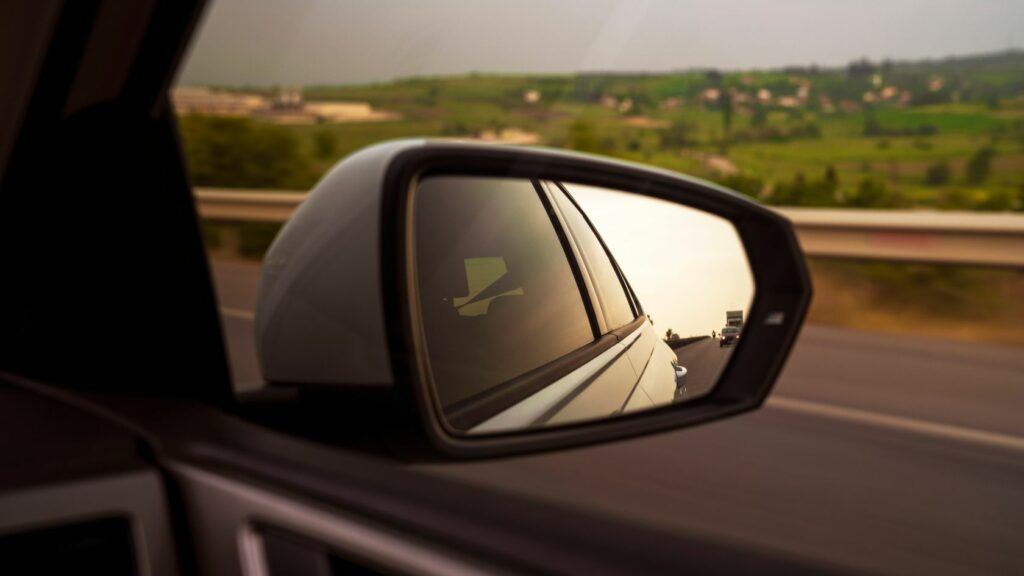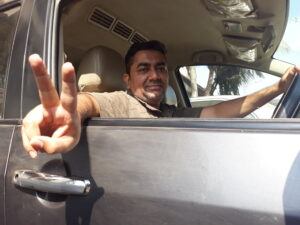
The hidden zone around your car where other vehicles disappear is called a blind spot. It’s an area that your car’s mirrors can’t cover, and it’s critical for driving safety. So, how many blind spots are there in a car and other vehicles?
Blind spots can differ depending on the vehicle you’re driving, whether it’s a compact car, an SUV, a truck, or a motorcycle.
Understanding where they are and how to spot them will be crucial. In this post, you’re going to find out about common blind spot areas in different vehicles and explore strategies for locating and becoming aware of these unseen zones.
How Many Blind Spots Are There in a Car?
Typically, a standard passenger car has two main blind spots. These spots are located on either side of the car, just behind the left and right side mirrors.
However, keep in mind that the size and number of blind spots can increase with the size of the vehicle.
Semi-trucks or vehicles towing trailers, for instance, have larger blind spots due to their increased length and height.
The very design of a car contributes to the creation of blind spots. Pillars that support the roof, the rear headrests, passengers, or cargo can all obscure your view.
Essentially, any part of your vehicle that blocks your line of sight to the areas behind or on the sides of your car can create a blind spot.
This isn’t just about knowing where these blind spots are; it’s also about learning how to manage them effectively.
Identifying Your Car’s Blind Spots
Now that you’re aware of what blind spots are and how they can vary, let’s move on to the next important step: identifying the specific blind spots in your car.

Think of your car as having its own set of blinders, similar to those on a horse, that block certain areas from your sight. These are your blind spots, and not being aware of them is a pretty risky business.
To begin with, certain areas typically fall into the category of blind spots. These are located over your shoulders and near the rear of your car.
To discover these sneaky zones, you can do a simple exercise. Park your car and place an object at various distances and angles, then sit in the driver’s seat and check what you can’t see without moving your head. It’s surprising, right? Side mirrors show a lot, but not everything.
When it comes to your mirrors, you’ve got a power trio working for you: the rearview mirror and two side mirrors. Setting them up correctly is like aligning stars for clearer navigation.
Angle your side mirrors just beyond the point where your car is no longer visible, which helps significantly reduce the size of your blind spots.
Remember, some smart mirror work upfront can save you from a lot of headaches on the road.
Safeguarding Against Blind Spot-Related Accidents
Now, you’re well-versed on what blind spots are and how to pinpoint them in your car. But knowing is only half the battle!
It’s your actions on the road that truly make a difference. It’s crucial to adopt certain best practices to ensure you and others on the road stay safe.
Before we get into the best practices for checking blind spots, I want to touch on a bit of tech magic that’s changing the game – blind spot detection systems.
These systems alert you when there’s an object in your blind spot, drastically improving safety. If you’re shopping for a new car, this is a feature worth prioritizing.
But technology is no substitute for good driving habits. Always turn your head to check your blind spots before switching lanes—mirrors alone won’t cut it.
Be particularly mindful in heavy traffic or on multi-lane roads, where the stakes are higher.
Different Types of Blind Spots While Driving
As evident, almost every vehicle has blind spots. So, what are their types? Let’s take a closer look at the different types of blind spots you might encounter on the road:
Rear Quarter Blind Spots: These are the most common culprits, lurking just behind the C-pillars (those thick pillars behind your rear doors) on both sides of your car. Motorcycles, bicycles, and even small cars can easily disappear in these zones.
Checking over your shoulder or using rearview cameras can help in tackling rear blind spots.
Front Pillar Blind Spots: The A-pillars (windshield pillars) can also be sneaky, hiding pedestrians, cyclists, and motorbikes approaching from the side.

The front pillar blind spots are directly in front of the vehicle. They provide limited visibility due to the hood and sometimes the windshield pillars.
Adjusting seat height, using proper seating position, and remaining cautious at intersections can help manage front blind spots.
Mirror Blind Spots: Even with properly adjusted mirrors, there can be small areas right next to your car that remain unseen.
You need to be extra cautious when pulling out from a parked position or squeezing past slow-moving vehicles.
The above three are the main blind spots associated with cars. Beyond cars, larger vehicles like trucks and buses have different zones of blind spots that you will find in the below section.
Common Blind Spots for Different Vehicles
It’s not just about cars. Every vehicle has blind spots and the size and location of blind spots can vary among different types of vehicles.
Here are some common blind spots for specific vehicle types:
Trucks, SUVs, Commercial Vehicles and Buses
Long buses, trucks, and large commercial vehicles have much larger and more extensive rear blind spots. Due to their size, the entire area alongside and behind the driver’s side, often extending several lanes, can be invisible to the driver.
Such longer invisible areas make it crucial to check blind spots before changing lanes for these bigger vehicles.

Large trucks and buses particularly have significant blind spots along the sides as well. Drivers of these vehicles may use additional mirrors to minimize blind spots.
As a driver, you must give trucks and buses extra space. Avoid lingering in their blind spots, and maintain a safe following distance.
Motorcycles
Motorcycles have a smaller profile that makes them easily hidden in the rear blind spot of larger vehicles.
These two-wheelers can be easily overlooked in side mirrors, especially if they are filtering through traffic.
Ensure your side mirrors are angled properly and always perform a shoulder check before changing lanes or merging.
Bicycles
Bicycles can be challenging to see in the rearview mirror, especially in traffic. Bicycles on either side of the vehicle may not be visible in side mirrors. Drivers should be cautious when turning or changing lanes.
Emergency Vehicles
Emergency vehicles, such as ambulances and fire trucks, may have obscured visibility due to their size and the equipment they carry. Other drivers should yield and give them plenty of space.
Does Every Car Have a Blind Spot?
Yes, nearly every car or vehicle has blind spots to some extent. However, the size and location of blind spots can vary based on the vehicle’s design, including factors such as the size of the vehicle, the placement of mirrors, and the design of the vehicle’s pillars.
Understanding the existence of blind spots and taking proactive measures to minimize risks associated with them are essential for safe driving.
Adjusting mirrors properly, staying aware of surrounding traffic, and using additional safety features if available can contribute to reducing the impact of blind spots on road safety.
Final thoughts
Basically, there are two blind spots in a car but actual numbers may vary according to the size and type of vehicle.
More than the numbers, it is important to understand the criticality of blind spots and learn the tactics of using mirrors to drive more safely.
Remember, your first attempt at improving your driving habits doesn’t need to be your last. Keep refining your techniques, and consider investing in technologies that aid in blind spot detection.

